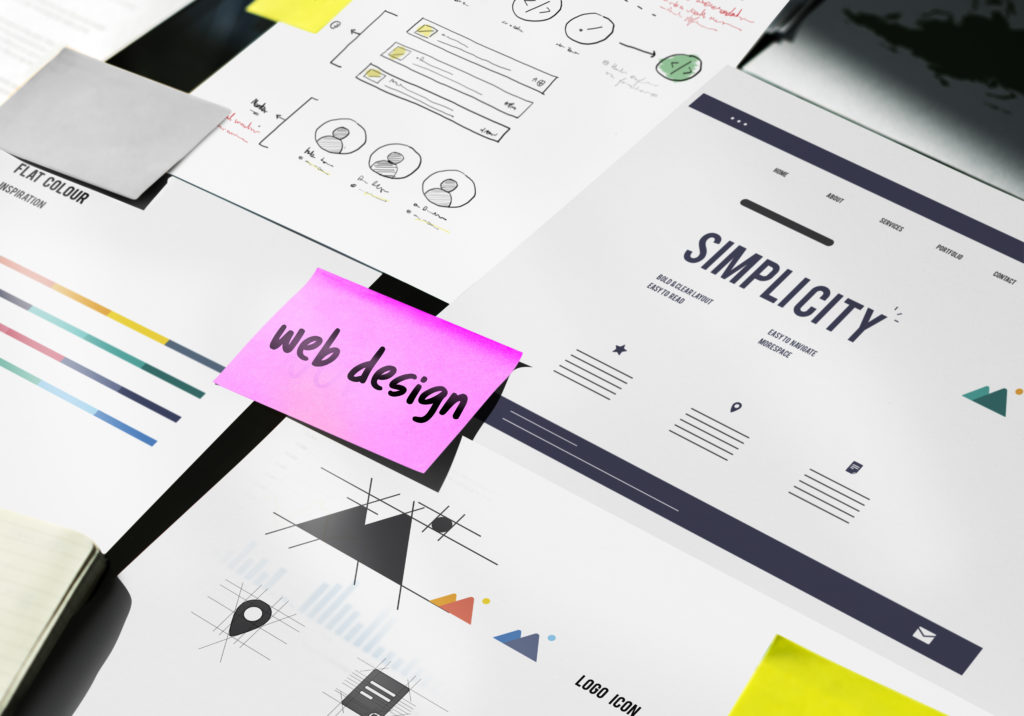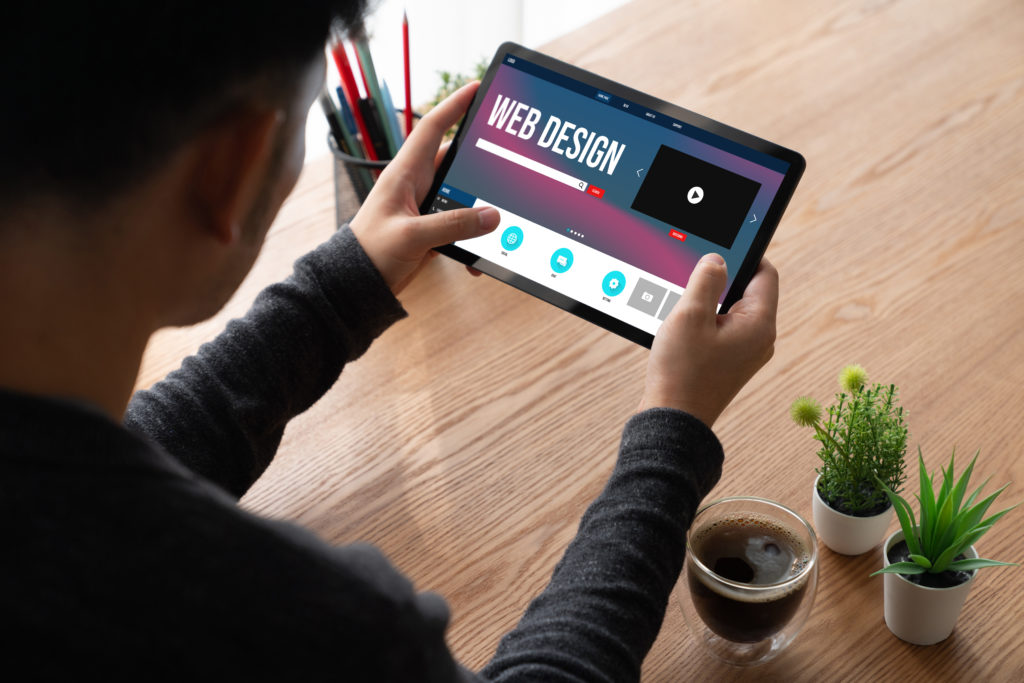Responsive web design has become a buzzword over the past few years. But what does it really mean? And how do you implement responsive web design in your website?
In this post, we’ll go over what responsive web design means, how it works, and why it matters.
Key Takeaways
- Responsive Web Design (RWD) allows websites to automatically adjust their layout to fit any screen size, ensuring a seamless user experience across mobile, tablet, and desktop devices.
- Mobile-first approach is crucial as more users access websites through smartphones, emphasizing the need for optimized content, layout, and navigation for mobile devices.
- Improved SEO is one of the significant benefits of responsive web design, as Google favors mobile-friendly websites in its search rankings.
- Cost and time savings are achieved by maintaining a single website that works well across all devices, eliminating the need for multiple site versions.

What is Responsive Web Design?
Responsive web design (RWD) is a method of designing websites that automatically adjust to fit any screen size. This means that when users view your site on a smartphone, tablet, laptop, or computer monitor, everything looks great.
When you use responsive web design, you’re not creating separate versions of your site for different devices. Instead, you’re making your site work well across all screens.
This makes responsive web design ideal because it saves them money and time. There is no need to create multiple sites for each device type. Instead, you only need to build one site that works well on every screen.
With responsive web design, you can easily update content on your site and keep it looking fresh.
How Does Responsive Web Design Work?

The basic concept behind responsive web design is simple: Make sure your site displays properly on mobile devices first. Then make sure it displays correctly on desktop computers.
If you’ve ever visited a website on an iPhone, iPad, Android phone, or other mobile device, then you know that most websites are designed with a small screen in mind. They have large text, images, buttons, and menus that take up too much space.
If you visit a website on a larger screen like a computer monitor, you see a completely different experience. You don’t want to force people to zoom out their browser window just so they can read your content.
So instead of forcing visitors to change their browsing habits, responsive web design allows you to display your content appropriately based on the device they’re using.
For example, if you’re building a blog, you might show more posts per page on smaller screens. On larger screens, you could show fewer posts per page.
You can also add media queries to your CSS code to hide certain elements on smaller screens. For instance, you could hide navigation links, social icons, and ads on mobile devices.
Buttons and other interactive features should be visible on both mobile and desktop devices.
Why Should You Care About Responsive Web Design?

1. Mobile First Approach
Mobile devices are becoming increasingly common these days. As such, most users access the internet using mobile phones or tablets.
This means that you need to think about your site’s content and functionality for mobile visitors. If you don’t, you may find yourself missing out on potential customers.
For example, if you offer products online, you probably want to include images of those products on your website. However, if you haven’t optimized your website for mobile viewing, you may miss out on sales opportunities.
That’s because many mobile phone users browse sites using smaller screens, meaning that they won’t be able to see all of your product images.
As such, you need to optimize your website for mobile viewing. This involves optimizing your page layouts, text sizes, and navigation menus.
2. Better User Experience
Users expect certain things from websites, especially when browsing on mobile devices. For instance, they expect pages to load quickly, and they expect to be able to scroll down a page without any problems.
When you implement responsive web design, you ensure that your website works smoothly across multiple screen sizes.
This means that users will be able to navigate your site easily and comfortably. They’ll also be able to read everything on your site without having to zoom in or out.
3. Increased Traffic
One of the biggest benefits of implementing responsive web design is increased traffic. When you create a single website that fits all screen sizes, you limit the number of times your audience has to reload the same page.
In addition, you increase the chances that your audience will return to your site. That’s because they’ll be able to view your entire site at once.
4. Improved Search Rankings
Google uses several factors to determine search rankings. One of those factors is responsiveness.
Google wants to make sure that your site loads fast, and that it displays well on mobile devices.
So, if your site doesn’t perform well on mobile devices, then it’s unlikely to rank highly in searches.
On the flip side, if your site does perform well on mobile devices and performs well on desktops, then it’s much more likely to rank highly in searches than a site that isn’t responsive.
5. SEO Benefits
SEO stands for search engine optimization. It refers to the practice of improving your ranking in search results.
There are two main types of SEO: Onsite SEO and Offsite SEO.
Onsite SEO focuses on improving the quality of your website itself. This includes things like ensuring that your page titles and meta descriptions are relevant, and that your site’s code is clean and organized.
Offsite SEO focuses on improving your overall visibility in search engines. This includes things like creating links to your site, and writing articles that link to your site.
With responsive web design, you’re able to improve your offsite SEO efforts.
Because your site will display properly on mobile devices, you’ll be able to write blog posts and share articles that link to your website.
6. More Conversions
If you sell physical goods online, then you probably want to encourage people to buy from you.
One way to do this is through email marketing campaigns. But, if you don’t have an effective email campaign, then you could lose potential customers.
By implementing responsive web design, you can create emails that look great on mobile phones. As a result, you’ll be able get more conversions.
7. Better Customer Service
Customers expect to be able to contact customer service representatives via phone, chat, or email.
But, if your website doesn’t work well on mobile devices, you may not be able to provide good customer support.
By using responsive web design, you’ll be able provide better customer service because your site will display correctly on all devices.
8. Cost Savings
Responsive web design also saves money.
When you invest in a custom website, you’re paying upfront costs. These include hiring a developer, purchasing hosting services, and buying domain names.
However, once your site is built, you can save money by avoiding maintenance fees.
Additionally, you avoid spending money on advertising and marketing campaigns.
Instead, you focus on creating valuable content that attracts readers and customers.
9. Faster Loading Times
When you visit a site, you expect to see the homepage immediately. After all, you didn’t come to the site to wait for it to load.
But if your site takes too long to load, you’ll be forced to click back button repeatedly until you finally reach the homepage. And each time you do, you’ll be redirected to another page.
That’s annoying, especially if you’re trying to access a certain section of the site.
With responsive web development, you can create a single website that loads quickly across different platforms. As a result, you’ll avoid redirecting users to different pages.
10. Easier To Update
You should update your website regularly. If you don’t, then you risk losing visitors who’ve already left your site.
And when they leave, they might never return.
But updating your site isn’t easy. You need to make sure that every page displays properly on all devices.
This means that you need to test your site on various browsers and operating systems.
With responsive design, updating your website is a lot easier. Because you only need to change one file instead of multiple files.
Conclusion
In conclusion, responsive web design means that your website will adapt itself to fit any screen size, from phones to tablets to laptops to desktops. This makes it easier for users to navigate your site regardless of their device. And if you care about your SEO (search engine optimization), responsive web design also helps improve your rankings because Google prefers websites that have mobile versions.
Responsive web design is becoming increasingly popular among designers and developers, but it’s still relatively new technology. We recommend starting small and testing different layouts before going live. Once you feel comfortable with the process, you can move forward with confidence. Contact us today!



